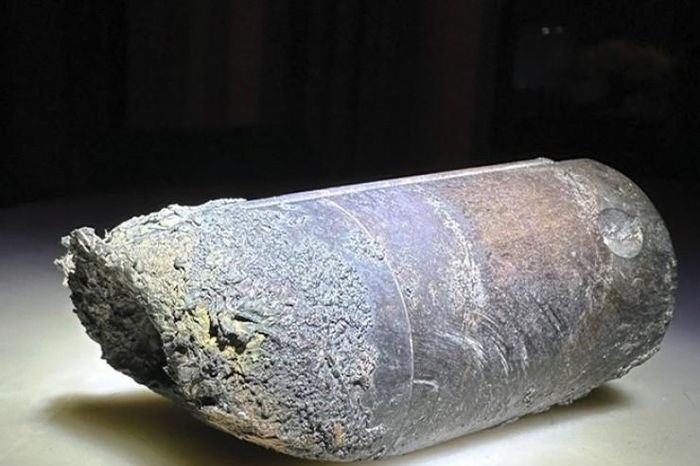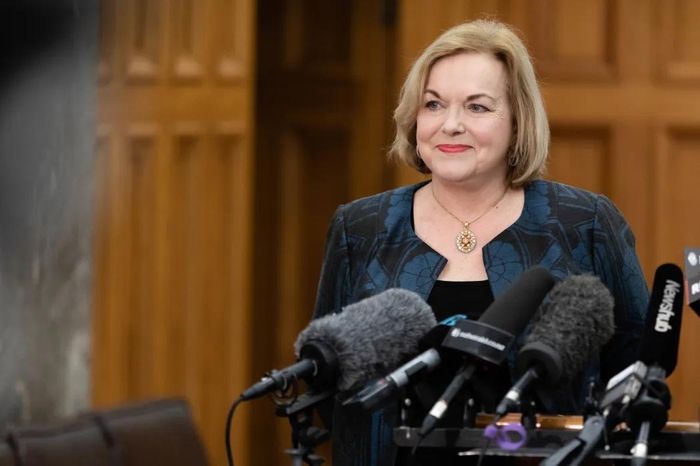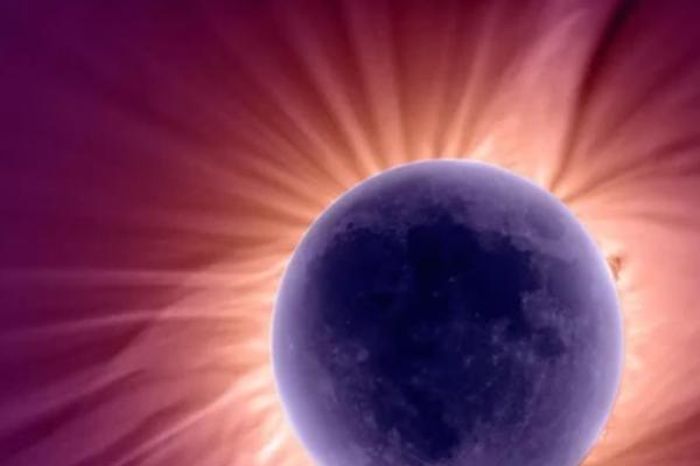Anxiously awaiting the discovery of life on the moon 2.6 billion km from Earth

In less than six months, NASA will launch Europa Clipper on a 2.6 billion kilometer journey to Jupiter's moon Europa. It was a long and harsh trip with vibrations and impacts in the outer space environment, where it was subjected to solar radiation, even cosmic gamma rays and of course extreme hot and cold temperatures. To prepare for that, Europa Clipper recently went through a series of pivotal tests at the laboratory to ensure the spacecraft was up to the challenge.
For the most realistic testing, scientists at NASA simulated the environment the spacecraft would face, subjecting it to vibrations, cold, lack of air, electromagnetic fields, etc.
Jordan Evans, the mission's project manager, said: 'These are the last major tests to iron out any errors. Our engineers conducted a series of well-designed and challenging tests to put the system up to the challenge. What we found was that the spacecraft could handle the conditions well during and after launch. The system works very well and as expected'.
The most recent test of Europa Clipper was also one of the most complex, requiring 16 days to complete. Europa Clipper is the largest spacecraft NASA has ever built for a planetary exploration mission and was one of the craft pushed into the vacuum simulator at 26 meters long and 8 meters in diameter. Known as the Space Simulator, this chamber creates a near-perfect vacuum inside to simulate the airless environment of outer space.
Engineers have subjected the spacecraft's hardware to the high temperatures it will experience when Europa Clipper is exposed to direct sunlight while the spacecraft is fresh from Earth. Beams from high-powered lights at the base of the Space Simulator will recreate the heat the spacecraft will experience while close to the Sun.
To simulate Europa Clipper's journey away from the Sun, the bulbs were dimmed and tubes filled with liquid nitrogen were placed in the walls of the chamber to cool them to space temperatures. The team then assessed whether the spacecraft could warm itself by monitoring about 500 temperature sensors.
The orbiter has also undergone vibration, shock and acoustic testing. During vibration testing, the spacecraft was shaken continuously – up and down and side to side – in the same way it would be pushed up by a SpaceX Falcon Heavy rocket during liftoff. The artillery shock test simulates the shock that the spacecraft will experience when separating from the rocket to carry out its mission. Finally, acoustic testing ensured that Europa Clipper could withstand launch noise, where the rocket's rumble was so loud that it could damage the spacecraft if it wasn't sturdy enough.
Evans said: 'There is still much work to be done but we are on track to launch on time. And the fact that this trial was so successful is a huge positive and helps us feel less stressed.'
Preparing to go
Later this spring, the Europa Clipper spacecraft will be delivered to NASA's Kennedy Space Center in Florida. Here, a team of engineers and technicians will carry out the final preparations. Europa Clipper's departure time is expected to be October 10.
After liftoff, the spacecraft will hurtle toward Mars, and by the end of February 2025, it will be close enough to take advantage of the Red Planet's gravity to gain momentum. From there, the solar-powered spacecraft will return to Earth to receive another push from Earth's gravitational field in December 2026.
The spacecraft then moves to the outer solar system, where Europa Clipper is expected to reach Jupiter's orbit in 2030. The spacecraft will orbit the gas giant as it passes by Europa 49 times, with approximately just 25 km from the moon's surface to collect data using the most advanced equipment. The information collected will tell scientists more about the water-filled interior of Europa's moon.
More information about the mission
The main scientific goal of Europa Clipper is to determine whether any places below Europa's surface are capable of supporting life. The three main scientific goals of the mission are to determine the thickness of the moon's icy crust and its surface interaction with the ocean below; study its composition and describe its geological characteristics. The mission's detailed exploration of Europa will help scientists better understand the astrobiology potential for habitable worlds beyond our own.
You should read it
- 18 interesting 'bombs' of Google
- The true story of a 'poor overcoming' CEO and 6 valuable lessons for those who want to start a business
- Work with OneNote 2010
- Query XML data from a table with XML data type
- How to send extremely secure email encryption on Android
- Outstanding laptop sold in March 2013
- Take photos of the fanciful sky landscape with the following 5 tips
- Steps to change IP addresses on computers and Macs
May be interested
- NASA announces a place that can survive life right in our solar system
 1 hour this morning, nasa has officially announced the great discovery, enceladus - saturn's moon officially joins places that are likely to exist in the solar system.
1 hour this morning, nasa has officially announced the great discovery, enceladus - saturn's moon officially joins places that are likely to exist in the solar system. - History of Earth formation and 25 milestones (Part I)
 formed nearly 4.6 billion years ago and up to 1 billion years ago, life began to appear on the surface of the earth. since then, many things have changed on this planet, below are the most important milestones in the history of our planet's development.
formed nearly 4.6 billion years ago and up to 1 billion years ago, life began to appear on the surface of the earth. since then, many things have changed on this planet, below are the most important milestones in the history of our planet's development. - True moon, snow moon and comet will appear together today
 don't miss the extremely rare astronomical phenomenon - the half-moon eclipse, the snow moon and the comet will all appear later this weekend!
don't miss the extremely rare astronomical phenomenon - the half-moon eclipse, the snow moon and the comet will all appear later this weekend! - Calculated the time when the 'Moon touched the Earth'
 jason barners, a planetary scientist at the university of idaho, usa, after years of research, calculated the time the moon touched the earth.
jason barners, a planetary scientist at the university of idaho, usa, after years of research, calculated the time the moon touched the earth. - What will the Earth do if the Moon suddenly explodes?
 the distance from the earth to the moon is 384,400km. is this distance safe enough for the earth if the moon suddenly burst?
the distance from the earth to the moon is 384,400km. is this distance safe enough for the earth if the moon suddenly burst? - One day on the Moon is equal to how many days on Earth?
 the time it takes for the moon to orbit the earth is about 27.3 days, while the earth rotates once around its axis in 24 hours (one day - one night).
the time it takes for the moon to orbit the earth is about 27.3 days, while the earth rotates once around its axis in 24 hours (one day - one night). - Why is the moon glowing?
 we all know the extremely familiar natural phenomenon: the sun shines in the daytime, the moon shines at night. so, where is the light that the moon glows?
we all know the extremely familiar natural phenomenon: the sun shines in the daytime, the moon shines at night. so, where is the light that the moon glows? - Warning: in 2018 there will be 20 extremely serious earthquakes occurring because the Earth is slowing down
 experts warn that in 2018 there will be about 20 extremely serious earthquakes that affect at least 1 billion people.
experts warn that in 2018 there will be about 20 extremely serious earthquakes that affect at least 1 billion people. - Bacteria on Earth live easily on Moon Enceladus
 saturn's moon moon, saturn's moon moon, enceladus is one of the most promising places in the solar system to search for outer space.
saturn's moon moon, saturn's moon moon, enceladus is one of the most promising places in the solar system to search for outer space. - What will the Earth do if the Moon suddenly disappears?
 the moon and earth are closely related. if the moon abruptly disappears, everything on earth will turn upside down, change the tide, change the axis of rotation, causing tsunamis, earthquakes and climate change.
the moon and earth are closely related. if the moon abruptly disappears, everything on earth will turn upside down, change the tide, change the axis of rotation, causing tsunamis, earthquakes and climate change.










 Space junk from the ISS fell on a house in Florida
Space junk from the ISS fell on a house in Florida NASA chooses 3 companies to design lunar rovers for Artemis astronauts
NASA chooses 3 companies to design lunar rovers for Artemis astronauts NASA develops 'space sailboat' using solar energy
NASA develops 'space sailboat' using solar energy New Zealand strengthens cooperation with NASA to promote the space industry
New Zealand strengthens cooperation with NASA to promote the space industry NASA is about to launch three rockets to penetrate the total solar eclipse on April 8
NASA is about to launch three rockets to penetrate the total solar eclipse on April 8 NASA took on the task of establishing standard time on the Moon
NASA took on the task of establishing standard time on the Moon